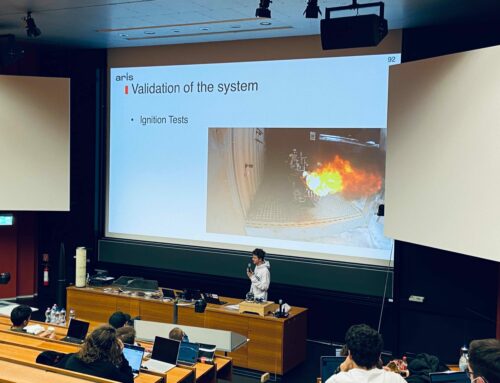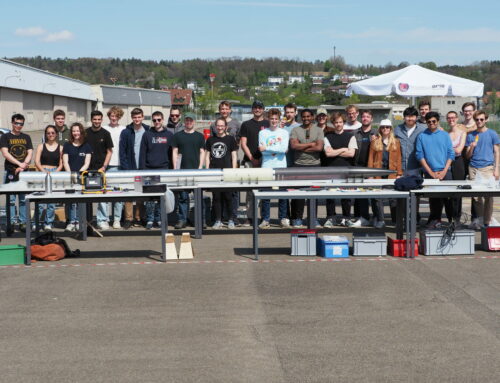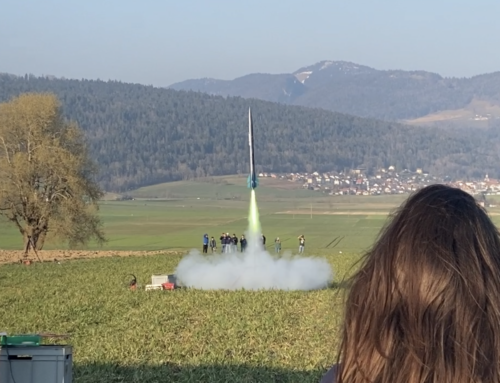On Monday the 02.05.2022 our Recovery Team, together with team PERIPHAS, went up to Wichlen to have their second and final helicopter drop test of their testing campaign.
What is a Helicopter Drop Test?
The name already says it all, we implement our parachute and deployment system into a standard parachute fairing. Below which we then attach a second fairing. This second fairing has a build-in concrete block making it 60 kg heavy. This allows us to simulate the weight the rocket would have during nominal mission deployment. This contraption then gets tight to a helicopter that flies to a height of 600-900 meters above ground. From there the system is then dropped. This allows us to simulate the shock loads the systems will endure during a deployment and see if our parachutes and our lines can endure these loads.
While the first drop test a week ago resulted in a ballistic decent due to a line ripping, the issue was quickly identified: We used an old parachute of previous missions that had no visible damage but in the end had non-visible damage, leading to it ripping on deployment. This was considered a partial success as we identified a new failure mode and now know what to be on the lookout for and how to mitigate this by strengthening the now known weak point.
This second drop test with the new parachutes was a full success with full recovery. The fairing even saluted the ground recovery team by standing upright, a pleasant surprise.
Team HELVETIA can now move forward with full confidence that we have tested the Recovery system to the fullest extend and are going full steam ahead towards the Spaceport America Cup launch in mid June.










Social Contact